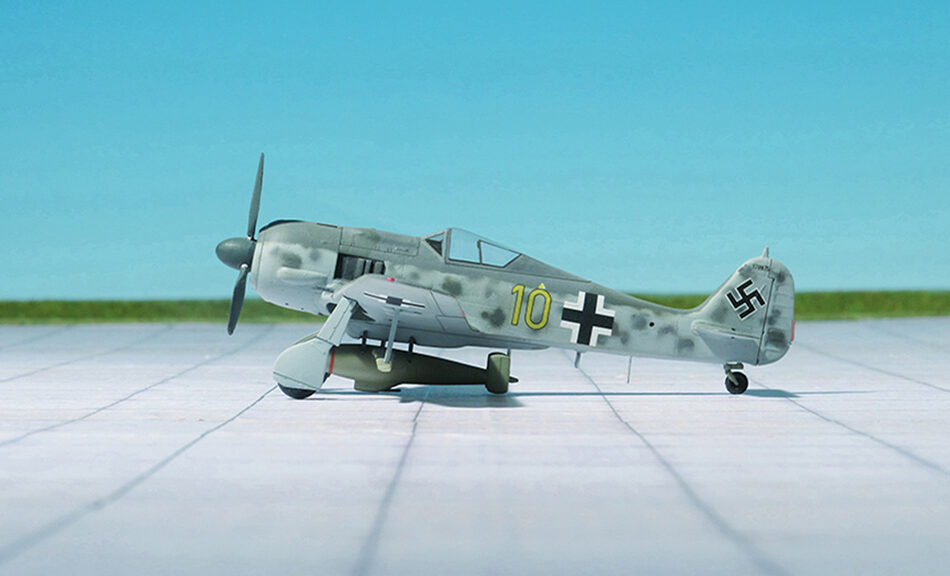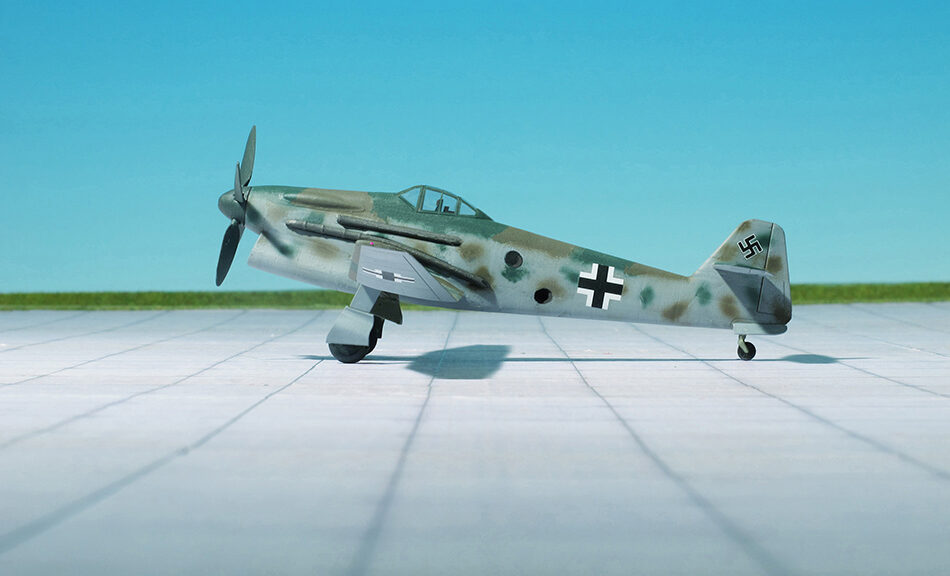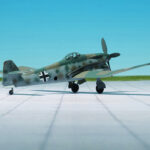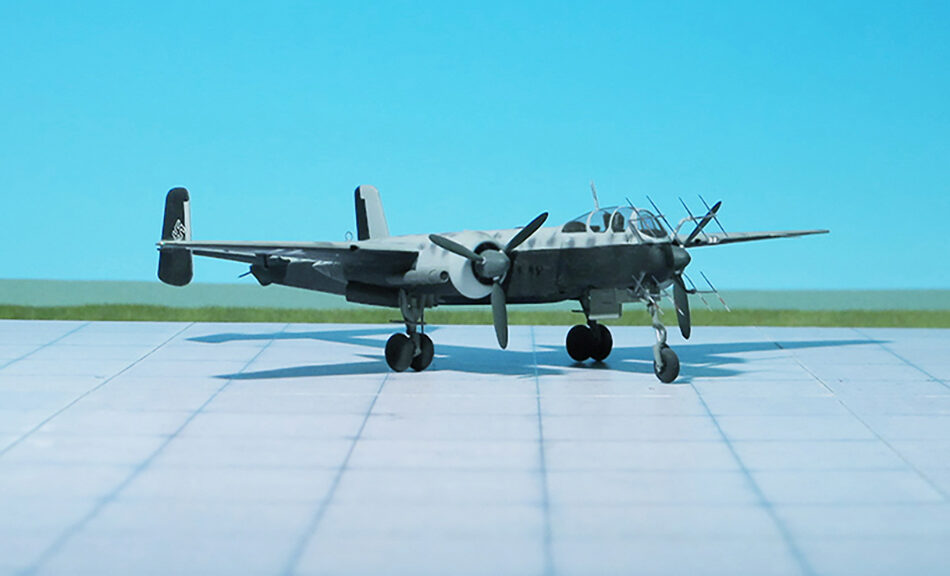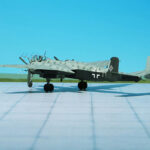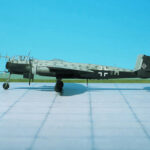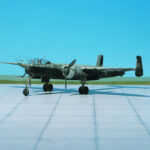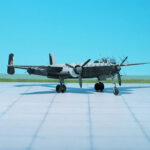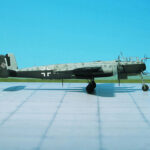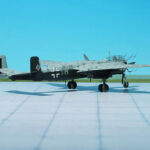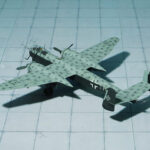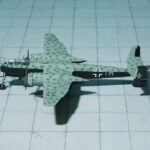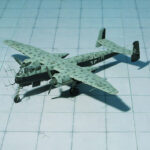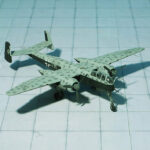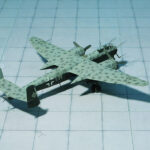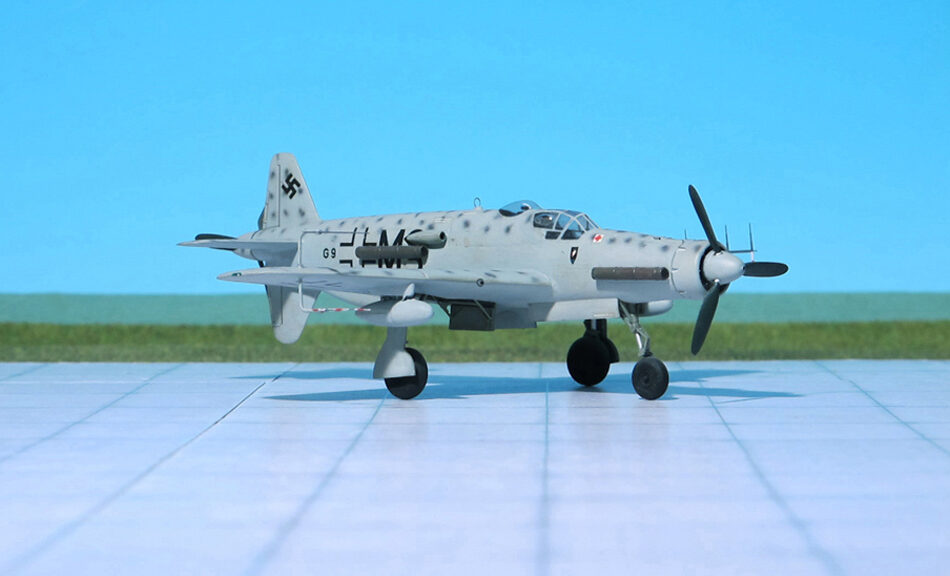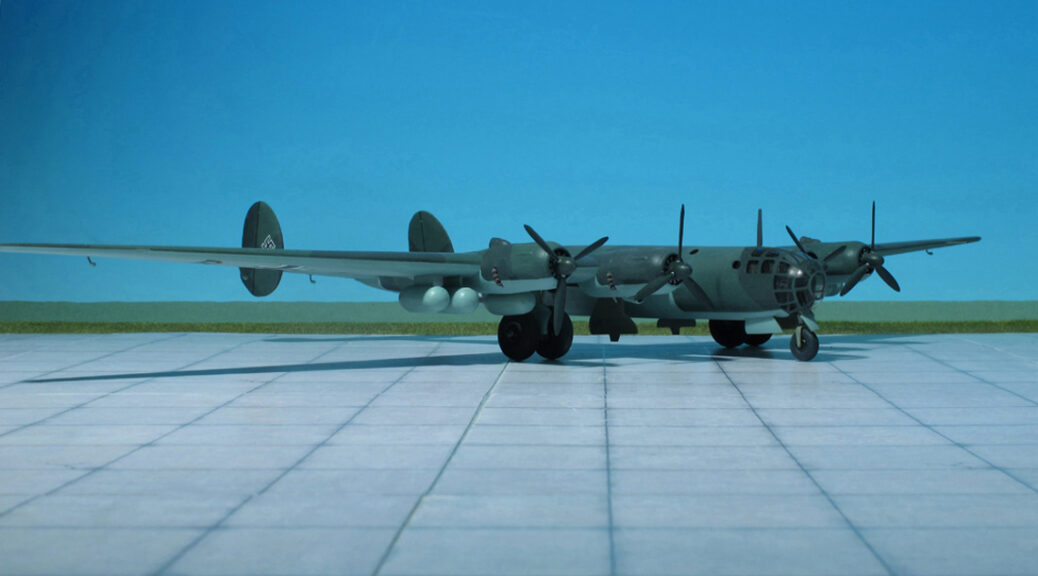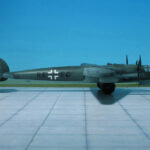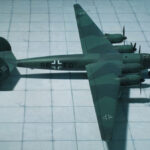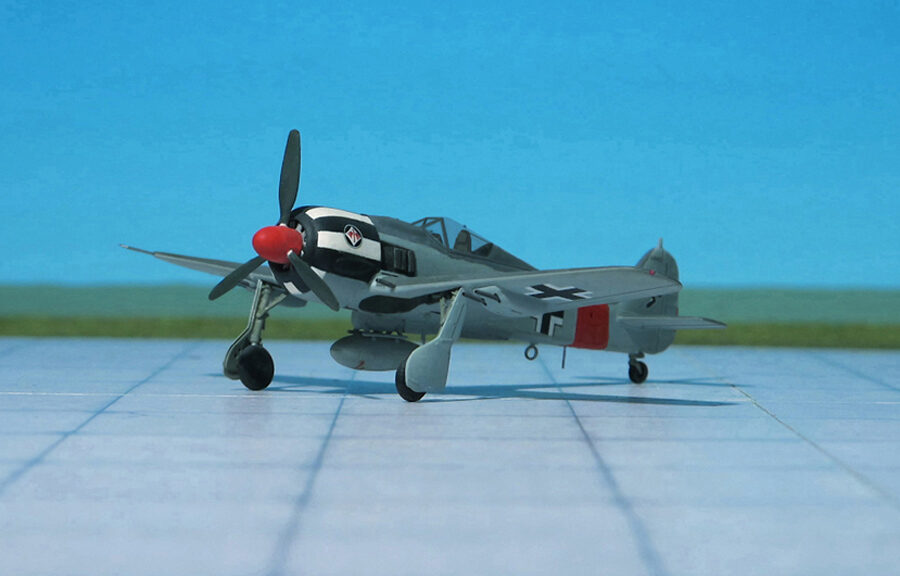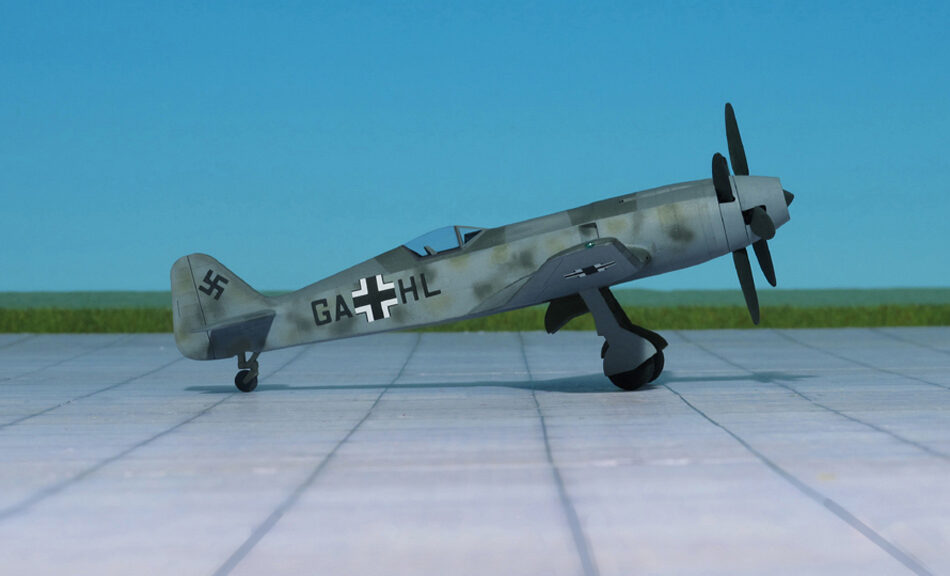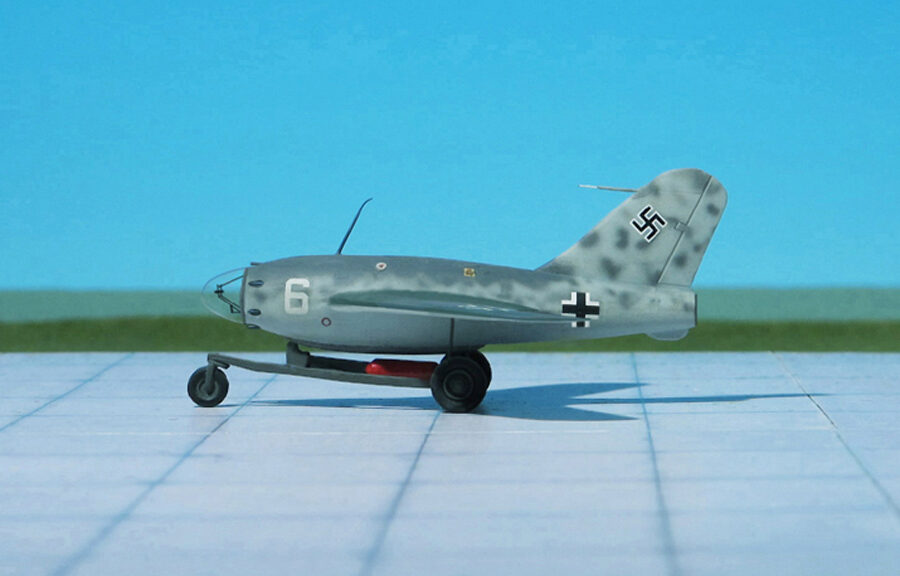TYPE: Fighter, fighter-bomber
ACCOMMODATION: Pilot only
POWER PLANT: One BMWD-2 air-cooled radial piston engine, rated at 1,440 hp at 18,700 ft
PERFORMANCE: 405 mph at 19,420 ft
COMMENT: The Focke-Wulf Fw 190, nicknamed Würger (Shrike) was a German single-seat, single-engine fighter aircraft designed by Kurt Tank at Focke-Wulf in the late 1930s and widely used during World War II. Along with its well-known counterpart, the Messerschmitt Bf 109, the Fw 190 became the backbone of the Jagdwaffe (Fighter Force) of the Luftwaffe. The twin-row BMW 801 radial engine that powered most operational versions enabled the Fw 190 to lift larger loads than the Bf 109, allowing its use as a day fighter, fighter-bomber, ground-attack aircraft and to a lesser degree, night-fighter.
The Fw 190A started flying operationally over France in August 1941 and quickly proved superior in all but turn radius to the Supermarine Spitfire Mk.V, the main front-line fighter of the Royal Air Force (RAF), particularly at low and medium altitudes. The Fw 190 maintained its superiority over Allied fighters until the introduction of the improved Spitfire Mk.IX. In November/December 1942, the Fw 190 made its air combat debut on the Eastern Front, finding much success in fighter wings and specialised ground-attack units (Schlachtgeschwader, Battle Wings or Strike Wings) from October 1943.
The Fw 190 participated on every major combat front where the Luftwaffe operated after 1941, and did so with success in a variety of roles. The Fw 190 first tested combat on the Western Front in August 1941, where it proved superior to the Spitfire Mk V Spitfire. The Spitfire’s main advantage over the Fw 190, and the Bf 109 as well, was its superior turn radius. Beyond that, the Fw 190 outperformed the Spitfire Mk. V in most areas, such as roll rate, speed, acceleration, and dive performance. The addition of the Fw 190 to the Jagdwaffe allowed the Germans to fight off RAF attacks and achieve local air superiority over German skies until the summer of 1942, when the improved Spitfire Mk. IX was introduced.
The Fw 190 was well-liked by its pilots. Some of the Luftwaffe’s most successful fighter aces claimed many of their kills while flying it. The Fw 190 had greater firepower than the Bf 109 and, at low to medium altitude, superior manoeuvrability, in the opinion of German pilots who flew both fighters. It was regarded as one of the best fighter planes of World War II.
The Fw 190F groung-attack configuration was originally tested in a Fw 190 A-0/U4, starting in May 1942. The A-0 testbed aircraft was outfitted with centerline and wing-mounted bomb racks. The early testing results were quite good, and Focke-Wulf began engineering the attack version of the Fw 190. New armor was added to the bottom of the fuselage, protecting the fuel tanks and pilot, the engine cowling, and the landing gear mechanisms and outer wing mounted armament. This attack configuration with additional armor and an ETC 501 centerline bomb rack was officially designated Umrüst-Bausatz kit 3 (abbreviated as /U3). It was first used on the A-4, the 18 known A-4/U3 were later redesignated Fw 190 F-1. The Fw 190 F-2s were renamed Fw 190 A-5/U3s, of which 270 were built according to Focke-Wulf production logs and Ministry of Aviation acceptance reports.
The Fw 190 F-8 differed from the A-8 model in having a slightly modified injector on the compressor which allowed for increased performance at lower altitudes for several minutes. The F-8 was also fitted with the improved FuG 16 ZS radio unit, which provided much better communication with ground combat units. Armament of the Fw 190 F-8 was two 20 mm MG 151/20 cannon in the wing roots and two 13 mm (.51 in) MG 131 machine guns above the engine. In the Fw 190 F-8/R1 two ETC 50 bomb racks were installed under each wing, capable of holding one 50 kg bomb each. In 1945 the ETC 50 was replaced with the ETC 70, capable of holding 70 kg bombs. According to Ministry of Aviation acceptance reports, at least 3,400 F-8s were built, and probably several hundred more were built in December 1944 and from February to May 1945. Dozens of F-8s served as various testbeds for anti-tank armament, including the WGr.28 280 mm air-to-ground missile, probably based on the projectiles from the Nbw 41 (Nebelwerfer 41, Smoke mortar 41) heavy ground-barrage rocket system, and the 3.5 in Panzerschreck 2 rockets, Panzerblitz 1 and R4M rockets.
The Focke-Wulf Fw 190F-8 shown here was modified as a carrier for the Blohm & Voss Bv 246 glide bomb. Note vertical bars beneath wings exerting tension of Bv 246 wings to project bomb away from the aircraft on release (Ref.: 7, 24).
Blohm & Voss Bv 246 Hagelkorn
The Blohm & Voss Bv 246 Hagelkorn (Hailstone) was a guided glide bomb developed to bomb specific targets (bridges, ships, etc.).
This glider was designed by Richard Vogt, at first under the designation of Bv 226, which was later changed to its definitive designation Bv 246 on December 1943.
It was intended to be dropped from a Junkers Ju 88 or a Heinkel He 111 bomber, either of which could carry up to three of the weapons, and was to be dropped from a height of 23,000 ft at a speed of 340 mph, giving it a range of up to 130 mi. In a slight dive the Bv 246 could reach a speed of 560 mph. Also, experiments were done with a varity of other carrier planes, including the Focke-Wulf Fw 190 and and other projected aicraft such as the Blohm & Voss Bv 204.
The construction of the Bv 246 avoided the usual aircraft techniques and strategic materials, so it could be mass-produced. It had clean aerodynamics, with high aspect ratio wings that made possible a glide ratio of 25:1. The wings were made of magnesite cement, formed around a steel spar. It had a cruciform tail in an early version and a double vertical tail mounted on the sides of a wide horizontal stabilizer in a later version. It had a length of 11.6 ft and a wingspan of 21 ft. Its total weight was 1,610 lb, of which 959 lb was the explosive warhead.
Initial tests revealed that the basic design was workable, but that the weapon was very inaccurate and because of this it was rejected. However, work was restarted in 1943, with 11 different versions being planned, due to its simple and inexpensive construction, and the new development contract was awarded to the Karlshagen test centre. A series of tests was begun to improve the weapon’s accuracy, with air drops performed by KG 101 (Kampfgeschwader, Bomber Group). Despite unpromising results, the RLM (Reichsluftfahrtministerium, Ministry of Aviation nevertheless issued the order to commence mass production on December 1943. In February 1944 the contract was cancelled due to the success of the Fieseler Fi 103 V-1 flying bomb.
The weapon was revived a further time, in early 1945, as an early form of antiradiation weapon, using the Radieschen (Garen radish) passive seeker which was designed to home in on Allied radar transmitters. Around 1,000 units were produced but never used operationally (Ref.:24).
